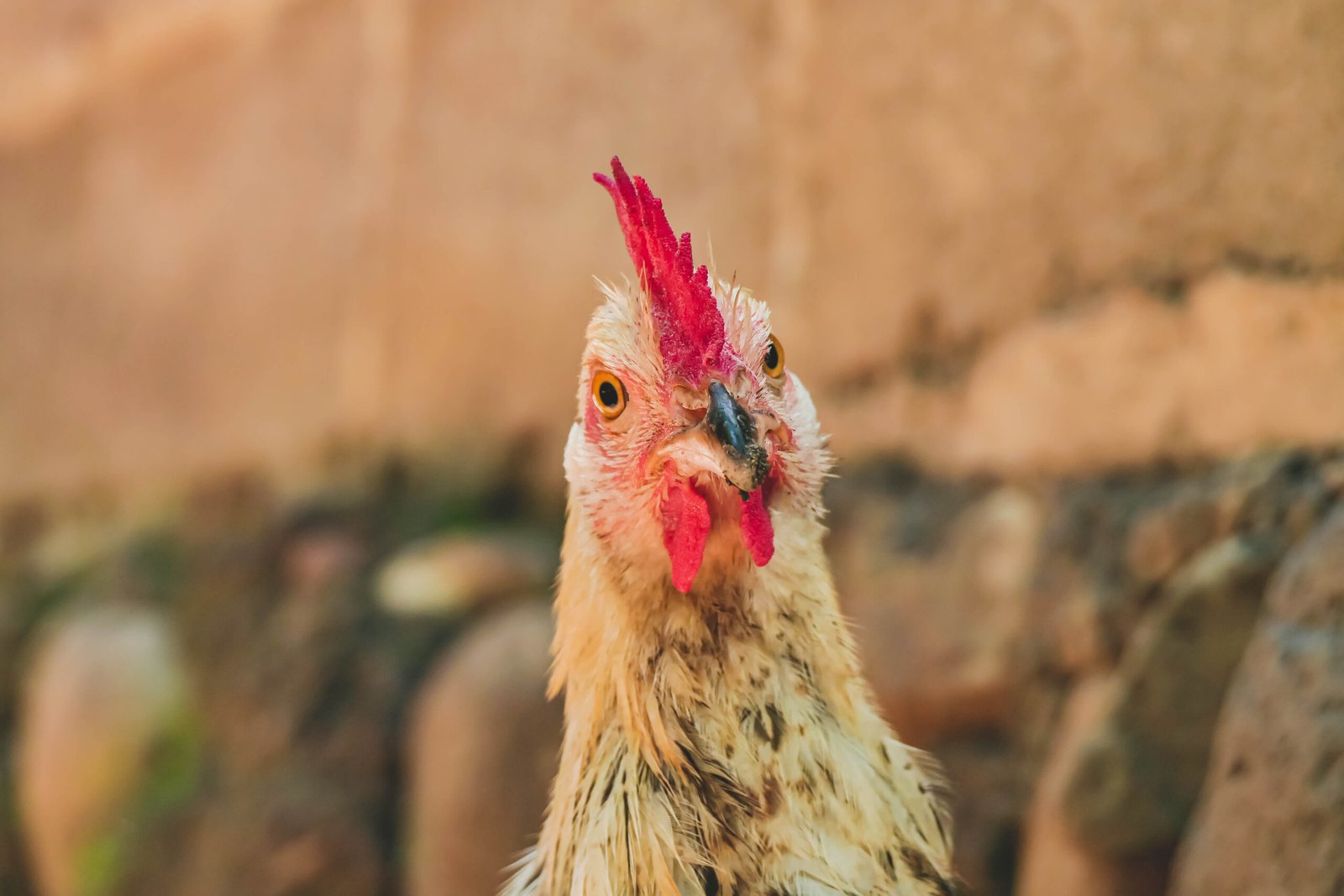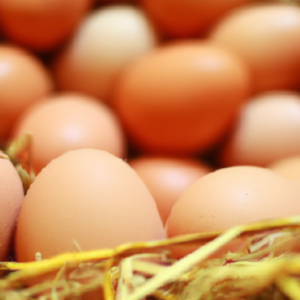
Have you ever wondered what the perfect balance of hens to roosters is in a flock? Finding the ideal ratio is crucial for the overall health and productivity of your chickens. Too many roosters can result in aggression and stressed hens, while too few could hinder successful breeding. In this article, we will explore how to strike the right balance and ensure a harmonious flock that thrives.

Factors to Consider
When determining the ideal ratio of hens to roosters in a flock, there are several factors that should be taken into consideration. These factors include the size of the flock, behavioral considerations, fertility and reproduction, and genetic diversity. Each of these factors plays a crucial role in determining the optimal ratio for your flock.
Size of the Flock
The size of your flock is an important factor to consider when determining the ratio of hens to roosters. If you have a small backyard flock, the dynamics and needs of the flock will be different compared to a large commercial flock. In a small flock, individual roosters may have a greater role in maintaining harmony and order, while in a larger flock, the ratio of hens to roosters may need to be adjusted to ensure proper breeding dynamics.
Behavioral Considerations
The behavior of both hens and roosters is another important factor when considering the ideal ratio. Roosters have a natural instinct to protect the flock and establish a pecking order, while hens have their own social dynamics. It is essential to observe the interactions between the roosters and hens in your flock to ensure a harmonious and safe environment.
Fertility and Reproduction
One of the primary purposes of having roosters in a flock is to ensure successful reproduction. The fertility of the hens and the ability of the roosters to successfully mate with them is crucial for maintaining a healthy flock. The ratio of hens to roosters can impact the reproductive success, and thus it is important to find the right balance to optimize fertility.
Genetic Diversity
Maintaining genetic diversity is vital for the long-term health and vitality of a flock. Having too few roosters in relation to the number of hens can lead to reduced genetic diversity, increasing the risk of inbreeding and genetic disorders. On the other hand, too many roosters can lead to competition for mating, resulting in a limited genetic pool. Striking a balance between genetic diversity and reproductive success is essential.
One Rooster for How Many Hens?
When it comes to the ratio of hens to roosters, there are two main breeding dynamics to consider – monogamous breeding and polygamous breeding.
Monogamous Breeding
In monogamous breeding, each rooster is paired with a single hen. This type of breeding can be ideal for smaller flocks, as it allows for a more controlled breeding process. With one rooster per hen, there is a higher likelihood of fertilized eggs and successful reproduction. However, this breeding dynamic may not be suitable for larger flocks, as it can limit genetic diversity and result in a slower rate of reproduction.
Polygamous Breeding
In polygamous breeding, each rooster is allowed to mate with multiple hens. This breeding dynamic allows for a faster rate of reproduction and can be suitable for larger flocks. However, it is important to monitor the behavior of the roosters to ensure that they do not become overly aggressive or cause harm to the hens. Additionally, the genetic diversity of the flock should be closely monitored to prevent inbreeding.

The Pros and Cons of Different Ratios
Choosing the right ratio of hens to roosters can have a significant impact on the dynamics of your flock. Let’s explore the pros and cons of different ratios to help you determine the best fit for your specific situation.
1:1 Ratio
In a 1:1 ratio, there is one rooster for every hen in the flock. This ratio can be suitable for small backyard flocks where the focus is on individual breeding pairs. It allows for close monitoring of each rooster’s behavior and ensures a higher likelihood of fertilized eggs. However, this ratio may not be ideal for larger flocks, as it can limit genetic diversity and lead to slower reproduction.
1:3 Ratio
A 1:3 ratio consists of one rooster for every three hens. This ratio strikes a balance between individual breeding pairs and a larger flock size. It allows for increased genetic diversity while still ensuring a higher likelihood of successful mating. The presence of multiple roosters can also help in maintaining order and reducing aggression among the roosters themselves.
1:5 Ratio
A 1:5 ratio involves one rooster for every five hens. This ratio is often seen in larger flocks where productivity and genetic diversity are essential. The increased number of hens per rooster allows for a faster rate of reproduction while still maintaining a reasonable level of genetic diversity. However, it is important to monitor the behavior of the roosters closely, as competition for mating can lead to aggression.
1:10 Ratio
In a 1:10 ratio, there is one rooster for every ten hens. This ratio is commonly found in large commercial flocks where the emphasis is on productivity and efficiency. The large number of hens per rooster allows for rapid reproduction, maximizing the production of fertilized eggs. However, the genetic diversity may be more limited, and close attention should be paid to minimize inbreeding.
The Impact on Fertility
The ratio of hens to roosters in a flock can significantly impact fertility. Let’s explore how different ratios can affect the reproductive success of your flock.
1:1 Ratio
In a 1:1 ratio, where there is one rooster for every hen, the likelihood of successful mating and fertilized eggs is generally high. Each hen has individual access to a rooster, increasing the chances of successful reproduction. This ratio is particularly effective in smaller flocks where individual breeding pairs are desired.
1:3 Ratio
A 1:3 ratio, with one rooster for every three hens, also offers a good balance for fertile eggs. The increased number of hens per rooster allows for a higher rate of reproduction, while still ensuring ample opportunities for successful mating. This ratio is often favored in flocks where both genetic diversity and breeding efficiency are important.
1:5 Ratio
A 1:5 ratio, with one rooster for every five hens, can lead to a faster rate of reproduction due to the increased number of hens available. However, there is a higher chance of competition among roosters, which can potentially decrease the overall fertility rate. Close monitoring of the flock is necessary to ensure that aggression is kept under control.
1:10 Ratio
In a 1:10 ratio, where there is one rooster for every ten hens, the focus is primarily on maximizing the number of fertilized eggs produced. The large number of hens per rooster ensures a rapid rate of reproduction. However, due to the significantly higher number of hens, the genetic diversity may be compromised, leading to potential risks of inbreeding.

The Impact on Behavior and Safety
The ratio of hens to roosters can also have an impact on the behavior and safety of your flock. Let’s explore how different ratios can affect the dynamics within the flock.
1:1 Ratio
In a 1:1 ratio, where there is one rooster for every hen, the presence of a single rooster can provide protection and establish a clear pecking order within the flock. The rooster’s natural instinct to protect the hens can create a safer environment for the entire flock. However, it is important to monitor the rooster’s behavior closely to ensure that it does not become overly aggressive towards either the other roosters or the hens.
1:3 Ratio
A 1:3 ratio, with one rooster for every three hens, allows for multiple roosters to coexist within the flock. This ratio can help distribute the responsibilities of maintaining order and providing protection. The presence of multiple roosters can minimize aggression among them, resulting in a more harmonious environment for the hens. However, it is still essential to monitor their behavior to prevent any potential conflicts.
1:5 Ratio
In a 1:5 ratio, where there is one rooster for every five hens, the competition for mating can lead to increased aggression among the roosters. This aggression can potentially lead to safety concerns for both the roosters and the hens. Close supervision and careful management of the flock’s dynamics are crucial to ensure the safety and well-being of all the birds.
1:10 Ratio
A 1:10 ratio, with one rooster for every ten hens, can create a more complex social dynamic within the flock. With a larger number of hens, establishing a pecking order and maintaining order can be more challenging. It is important to closely monitor the flock to ensure that any potential aggression or safety concerns are promptly addressed.
Feeding Considerations
The presence of roosters in a flock can influence the feeding dynamics among the birds. Let’s explore how roosters impact feeding hierarchy and the overall management of feeding.
Rooster Dominance
Roosters have a natural instinct to assert dominance and establish a pecking order within the flock. This dominance can extend to feeding time, with the roosters often taking priority over the hens. In larger flocks, where multiple roosters are present, this dominance behavior can become more pronounced. To manage feeding dynamics, it is recommended to provide multiple feeding stations to prevent excessive competition and ensure all birds have access to food.
Feeding Hierarchy
The presence of roosters can also influence the feeding hierarchy among the hens. In many flocks, the hens will establish a pecking order among themselves, determining who gets access to food first. Roosters may also play a role in reinforcing this hierarchy, particularly if they are more dominant individuals. Regular observation of feeding behavior is essential to ensure all birds have equal access to food and to prevent any potential bullying.
Managing Multiple Roosters
If you have multiple roosters in your flock, there are several management strategies you can employ to maintain a harmonious environment.
Introducing New Roosters
When introducing new roosters to an existing flock, it is important to proceed with caution. Roosters are territorial animals, and introducing a new rooster can lead to aggression and conflict. To minimize these issues, it is recommended to gradually introduce the new rooster to the flock, ensuring ample space and resources for each bird. Close monitoring of their behavior during the introduction process is crucial to prevent any harm to the birds.
Separating Roosters
If aggression becomes an issue within the flock, it may be necessary to separate the roosters. Creating separate living spaces for each rooster can help alleviate tension and reduce the risk of injuries. It is important to provide each separated rooster with adequate shelter, food, and water to ensure their well-being. Regular observation and rotation of the separated roosters can help maintain social balance within the flock.
Supervising Roosters
Regular supervision of roosters is essential to ensure a safe and harmonious environment for the flock. By closely observing their behavior, you can identify any potential aggression or conflicts early on. Unchecked aggression among roosters can lead to distress and harm both to the roosters themselves and the hens. Prompt intervention and appropriate management strategies can help maintain a peaceful and well-functioning flock.
The Role of Roosters in a Flock
Roosters play several important roles within a flock, each contributing to the overall health and well-being of the birds.
Protection of the Flock
Roosters have a natural instinct to protect the flock from potential threats. They will alert the hens to any potential danger and stand guard to ward off predators. The presence of roosters in the flock can provide an added layer of security, contributing to the safety and welfare of the entire flock.
Establishing a Pecking Order
Roosters also play a key role in establishing a pecking order within the flock. They help regulate social dynamics and maintain order among the hens. By asserting dominance and establishing a hierarchy, roosters contribute to a harmonious social structure within the flock.
Mating and Reproduction
Perhaps the most crucial role of roosters is their involvement in mating and reproduction. Roosters perform courtship rituals and engage in successful mating to ensure the production of fertile eggs. Their presence is essential for the continuation of the flock and the successful reproduction of future generations.
Case Studies
To illustrate the considerations discussed above, let’s explore two case studies – small backyard flocks and large commercial flocks.
Small Backyard Flocks
In a small backyard flock, the ideal ratio of hens to roosters may lean towards a 1:1 or 1:3 ratio. With fewer birds to manage, individual breeding pairs are often desired, making the 1:1 ratio suitable. The 1:3 ratio can also work well, as it allows for increased genetic diversity and ensures a higher likelihood of successful mating.
Large Commercial Flocks
In a large commercial flock, productivity and efficiency are key factors to consider. The ratio of hens to roosters may lean towards a 1:5 or 1:10 ratio. The increased number of hens per rooster in these ratios allows for rapid reproduction, maximizing egg production. However, monitoring behavior, managing aggression, and carefully monitoring genetic diversity are essential in large commercial flocks.
Conclusion
When determining the ideal ratio of hens to roosters in a flock, several factors must be considered. These include the size of the flock, behavioral considerations, fertility and reproduction, and genetic diversity. The ratio chosen will impact fertility, behavior, safety, feeding dynamics, and overall harmony within the flock. By carefully considering these factors and assessing the specific needs of your flock, you can determine the optimal ratio to ensure a healthy and thriving flock.







